Welcome to Shark Attacks in North Carolina.
To the east, North Carolina borders the Atlantic Ocean, providing a suitable environment for numerous aquatic species, which is why you can frequently spot sharks off the country’s coast. Naturally the high prevalence of sharks in the waters of North Carolina lead to a high number of shark attacks.

Tourists usually travel to North Carolina to visit its beaches. However, shark sightings are common in the waters around North Carolina. Therefore, shark attacks are very frequent in this region.
There are about twelve different species of shark in North Carolina. You may encounter some of the most majestic and terrifying sharks near its beaches.
Moreover, the frequency of shark attacks in this state is fourth in the nation. Sharks may attack humans due to several factors. Confusing humans with their prey or threat is the most typical reason for these attacks.
Let’s get to it!
Why Do Most Shark Attacks Occur in North Carolina?

In the summer, a lot of people visit the American shores to enjoy water sports such as swimming, surfing, and waterboarding. People are more likely to see a shark the deeper they dive into the ocean.
Since it’s harder to see below the water’s surface, most shark attacks occur there. Sharks often confuse humans with their prey, so there will inevitably be more shark attacks if there are more humans around.
Sometimes, human activities can also disturb sharks. So, when a shark feels threatened by changes in its surroundings, it can attack a person by believing them to be a danger.
How Often Do Sharks Bite People in South Carolina?
South Carolina has recieved much attention due to various shark attacks in the last five years. Mainly because a large number of these attacks have proven deadly.
Sharks are sea creatures and are usually less likely to be seen closer to the shore. Between 1837 and 2021, there were 111 unprovoked shark attacks in South Carolina, some of which were fatal.
The Horry and Beaufort counties in North Carolina are where most of these attacks occurred. Moreover, folly Beach and Myrtle Beach are two of the world’s most shark-infested beaches, both being well-known for their regular shark sightings.
What Species of Sharks Inhabit the North Carolina Region?
More than 12 kinds of sharks live in the waters off South Carolina. Furthermore, three of the most violent shark species in the world call this coastal state home. They include the bull shark, tiger shark, and great white shark.
In North Carolina, you might run into a variety of shark species, but tiger sharks are the most common among them. The abundance of various species is why shark sightings are so frequent in this region.
Types of Sharks Found in North Carolina
Here is an overview of some of the famous sharks you can see in North Carolina:
#1 Great White Shark
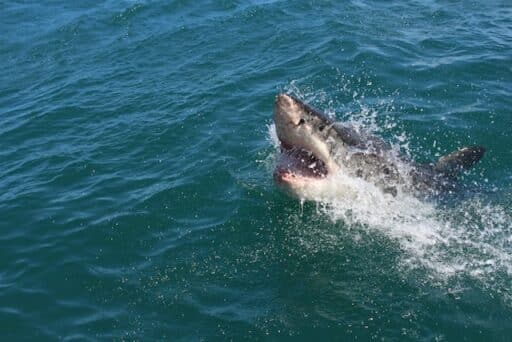
One of the largest shark species in the world is the great white shark. They can grow up to 26 feet long and occupy tropical waters and open oceans.
Additionally, the variety of teeth they grow throughout their lives makes them unique. They consume smaller whales, dolphins, sea lions, seals, and porpoises.
These aren’t found in small rivers or lakes because they prefer swimming in the open sea. Great white juveniles prefer staying close to the beach. However, adults go hunting in the deep ocean.
Check out the Spotted Gully Shark!
Great White sharks are often spotted in the waters close to Carolina’s beaches and many cases of Great White-attacks occur in the area.
#2 Tiger Shark

These tiger sharks stand second amongst some of the most aggressive species in the world. Therefore, they have a long history of attacks in the North Carolina region.
Tiger sharks are likewise referred to as “garbage fish.” This is due to their ability to feed on nearly everything and anything. They eat a variety of aquatic animals, but also other rubbish due to their sharp teeth.
However, squid, rays, dolphins, seagulls, and sea turtles constitute their primary diet. Additionally, Tiger Sharks can reach incredible lengths of 18 feet.
They are typically spotted far from the coast of North Carolina. However, they occasionally approach closer in the hunt for fish. These sharks prefer to prey at night. Warm waters are their home, and they often live in tropical or subtropical waters.
Moreover, tiger sharks have square, blunt noses and short dorsal fins. Their teeth have two sharp edges and are bent to one side.
#3 Finetooth Shark

The second-most prevalent shark species in North Carolina are Finetooth Sharks, also known as Carcharhinus Isodon.
These North Carolina-based requiem sharks are aquatic animals that can grow up to 6.2 feet in length. Their bodies are sleek and lean, and also, they have big, wide eyes and a long, pointed snout.
The lower jaw of these sharks has 13–14 rows of teeth. Likewise, the upper jaw has 12–15 teeth rows on each side. Their teeth are tiny in structure and resemble needles. Bony tiny fish are their main source of food.
This shark migrates to North Carolina in the late spring and remains in the waters until early fall. They favor shallow coastal waters and rivers for their habitat. Therefore, Finetooth sharks come to Florida in the winter.
#4 Lemon Shark
Lemon sharks get their name from their yellow-brown color. They are communal, sociable aquatic animals. Additionally, they rarely take part in shark attacks.
As long as humans don’t directly interfere with them, they are not regarded as dangerous. They also tend to feed at night, which is why they don’t often attack people.
Fish is their main dietary source. Lemon sharks often measure 10 to 11 feet long. They dwell in enclosed bays and shallow coastal waters. The dorsal fins in lemon sharks are quite big. A convex pectoral fin and a pelvic fin are also present. Moreover, they have small eyes and flat heads.
#5 Bonnethead Shark
Sphyrna tiburo is the scientific name for Bonnethead sharks. Sharks of this species are omnivores.
Furthermore, these are the only sharks with a particular head shape. On either side of their heads, they have eyes. In addition, they only have one big dorsal fin and one tiny one close to the tail.
Moreover, they have a pair of pectoral fins and a pair of pelvic fins, as well as an anal fin. They have long tails and pointed front teeth. These sharks are very dangerous.
Additionally, this shark species can reach lengths of 20 to 30 inches. Some females can grow to a height of 39 inches. These sharks are most prevalent between the months of June and October.
#6 Bull Shark
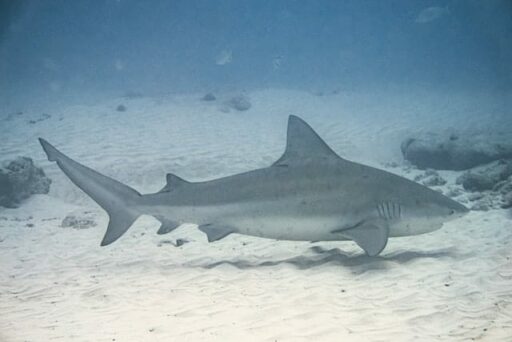
The third most aggressive species in the whole world is the bull shark. Accordingly, they are involved in most of the shark attacks in North Carolina. Another reason for their frequent involvement in attacks is that they never swim in water deeper than 100 feet.
Bull sharks are known scientifically as Carcharhinus leucas and like residing in warm coastal seas. Fish, sea turtles, and other smaller sharks form part of their diet.
They have no natural predators in the wild. However, there are reports of some bull sharks being killed by crocodiles and other sharks.
They reach a maximum length of about 11 feet. Records of shark attacks indicate that bull sharks prevail in Burkes Beach and Folly Beach. Hence, they are widespread in North Carolina.
#7 Nurse Shark
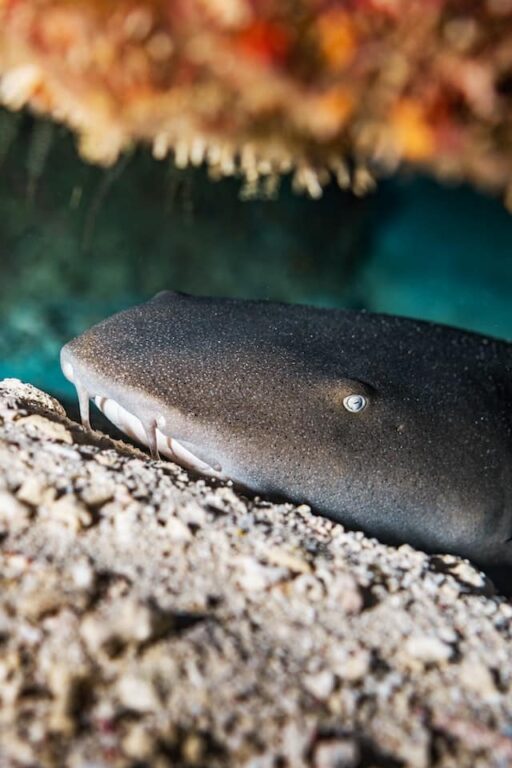
Smooth skin is a unique characteristic of nurse sharks, and they are most likely the smoothest shark species. These aquatic animals can reach lengths of about 9 feet.
Furthermore, they have a small snout and a large body. They also have tiny, rectangular jaws.
Warm, shallow waters are their typical habitat. They can be found all over the western Atlantic Ocean and the eastern Pacific Ocean. They reside close to wrecks, ledges, and reefs.
There have been many cases of attacks by Nurse sharks. They attack people upon feeling any danger. The majority of nurse shark attacks around the world were provoked.
#8 Thresher Shark
The majority of thresher shark sightings in North Carolina are near beaches. They can extend up to 20 feet in length and are frequently seen in coastal ocean waters. In the winter and spring, they are highly visible. There have been many cases of thresher shark attacks in North Carolina.
Thresher sharks use their incredibly long tails for hunting and grow to huge sizes. Additionally, Thresher sharks are in danger of going extinct. The
Overfishing for the shark fin soup industry, sport fishing, bycatch fatalities, and pollution are all factors that led to the species becoming endangered.
North Carolina Beaches with the Most Shark Attacks
Here is a list of beaches with the most shark attacks in North Carolina:
Topsail Beach
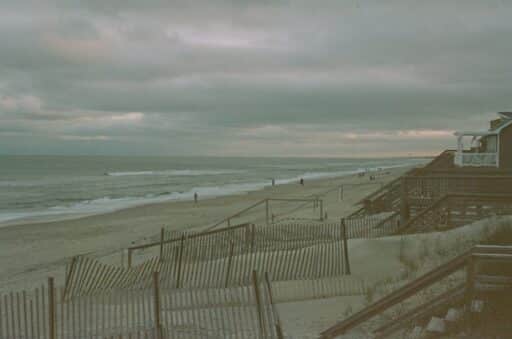
There is a long list of attacks occurring at North Topsail Beach. Fortunately, none of the shark attacks resulted in fatalities.
One incident took place on September 15, 2001. A 16-year-old boy named Dale Fulcher Jr. was surfing when a shark bit his foot. Moreover, a second incident happened on September 5, 2005, a few years later. Elizabeth Gardner’s calf suffered severe lacerations from a bull shark.
Furthermore, there were other attacks in 2007, 2008, 2010, and 2011. On Topsail Island, Surf City was the scene of two of them. The most recent episode that took place there included Tracy Fasick, a 43-year-old woman. She was swimming when a shark bit her, resulting in incisions on her right ankle and calf. It took place on July 8, 2012.
Wrightsville Beach

On October 8, 1989, the first attack at Wrightsville Beach was reported. It happened in New Hanover County, between Wrightsville Beach and Carolina Beach. Doug Nunnally, a 49-year-old male, was the victim. While diving, a shark attacked him, resulting in a fatal assault. However, there are many speculations regarding the shark’s role.
There were more events in 1995, 2000, 2002, and 2010. On August 17, 2011, a shark attacked a person at Wrightsville Beach, but few details were available. The only evidence indicates that a shark was involved, and the victim was a 12-year-old child.
Ocracoke

This is where the first deadly shark attack in North Carolina occurred. Several occurred between 1900 and 1905. In one of them, there was a coast guard employee involved who died following an incident in July 1905.
There were more events in 1945, 1988, and 2011. Moreover, a 6-7-foot-long shark bit Andrew Costello, a 68-year-old man, on July 1, 2015. He hurt his wrists and lower leg. The shark attacked the victim when he was surfing at Lifeguard Beach.
Ocean Isle

Children were primarily involved in the attacks at Ocean Isle. Except for one in 2019, which had a 19-year-old male. On August 10, 1980, there was the first shark attack at Ocean Isle.
One event involved Susan Waters, a 10-year-old girl. A shark was nearby when she was swimming and bit her lower leg and knee.
On June 18, 2012, an assault involving a second youngster occurred. However, there is no official confirmation of the shark’s involvement.
On June 27, 2021, the most recent attack on Ocean Isle occurred. Another youngster, a 7-year-old girl, was swimming when a shark bit her calf.
Holden Beach

There have been six shark attacks at Holden Beach. None of them were fatal, and they were all unprovoked. On June 30, 1940, the first attack occurred in the region. William T. Dye was fishing when a 10-foot shark bit his thigh. It was only 60 years later that a shark “dared” to attack a person at Holden again. While a child was surfing, a shark measuring a length of six feet attacked him.
Fortunately, the animal only caused minor wounds. Moreover, there were three other instances in 2005, 2009, and 2011. On July 11, 2013, there was the last recorded attack at Holden Beach.
It involved a 63-year-old woman named Barbara Corey. She was crossing the lake when a shark bit her right foot.
Carolina Beach
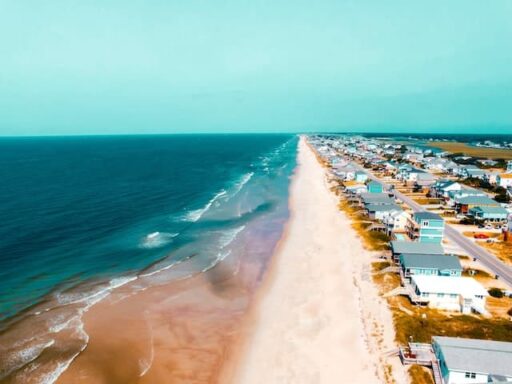
The majority of shark attacks in North Carolina happen near Carolina Beach. It is located in New Hanover County, between Wrightsville Beach and Carolina Beach. One event took place on October 8, 1989. Late in the day, a 49-year-old guy named Doug Nunnally was scuba diving.
He was later discovered dead. Although a shark’s involvement was heavily suspected in this case, no one has verified this yet. Furthermore, in 1995, another man’s body was discovered. He allegedly drowned. But upon inspection, experts were able to identify shark bites.
Masonboro Island
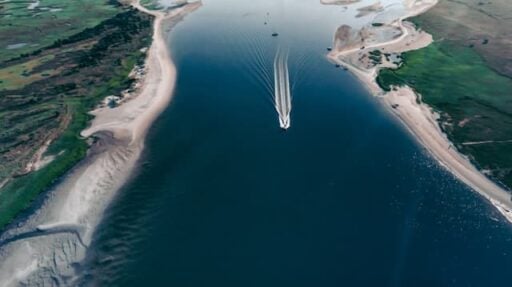
At Masonboro Island, all shark attacks have been unprovoked. The initial one took place on August 19, 1986. A shark bit J. McCorley’s hand when he was surfing. Michael Greenwood was in the same area swimming almost ten years later when his left arm was abruptly bit by a shark.
Additionally, there were other attacks in 2003, 2006, and 2014. Miller Diggs experienced the most recent one on August 24, 2014, in which she sustained wounds to her left foot from a four feet long shark.
Shark Attacks in North Carolina in 2021 and 2022

In terms of shark attacks, North Carolina ranked fourth in the US in 2021. According to the ISAF’s yearly review of shark attacks globally, there were various shark attacks in the coastal state. They constituted about 10% of all unprovoked attacks last year.
From 2021 to 2022, there were a lot of shark attacks in North Carolina. However, these figures reflect an overall regional pattern of rising shark attacks.
Before 2022, there were approximately 12 unprovoked shark attacks, according to the Washington Post. However, five incidents have already been reported this year, making it a total of 17 attacks.
Reasons for Increasing Shark Attacks in South Carolina
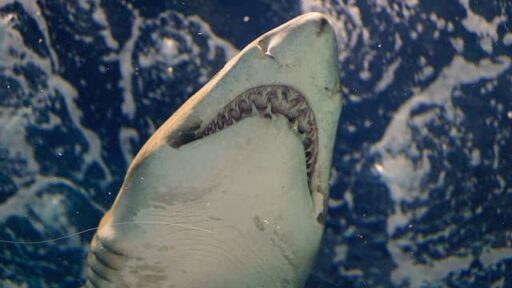
A number of variables may be contributing to the increasing rate of attacks. They mainly pertain to adverse weather conditions and numerous human activities.
Drought and Warmer Waters
Drought reduces the amount of freshwater available, resulting in a more salinity-rich environment along the shore, which draws more sharks and fish.
Moreover, sharks arrive in North Carolina before schedule due to warmer waters. The increase in attacks is largely due to this.
A Bloom of Bait Fish
This summer, North Carolina’s coast has had an extremely strong run of baitfish. Sharks enjoy consuming these little “bait fish” as prey, and they frequently travel great distances in their wake.
In general, there have been more people, sharks, and bait fish combined. Also, the attacks are possibly on the rise due to bull or tiger sharks.
Fishing Close to Swimmers
The attraction of sharks to fishing activities is undeniable. Additionally, sharks can detect blood and bait from great distances. Fishing can hurt or confuse sharks, and it increases their tendency to bite.
Communities should be more cautious when designating areas for swimming and fishing because it can lead to more shark attacks.
Climate Change
Experts point out that shark populations are increasing. Moreover, their habitat is shifting as a result of warming oceans. Therefore, sharks are now present in places where they may not have been before.
Consequently, they migrate earlier or later in the year. In terms of their preferred temperature, it depends on what they must do – feed or breed.
Global climate change is undoubtedly a reality. It has caused many places on earth to experience warmer temperatures, and the global shark populations will continue to increase as global warming progresses. Likewise, it will encourage more individuals to enter the water, increasing the number of bites.
The Final Word on Shark attacks in North Carolina
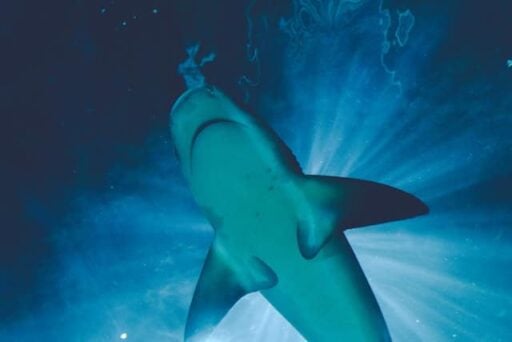
North Carolina is a popular travel destination in the US. Tourists frequently come here and encounter different species of sharks.
Both inshore and offshore sharks can be found in the waters of North Carolina. The state’s coastline is made up of 165 miles of beaches and Sea Islands.
Sharks live in a diverse ecology supported by these networks which provides a suitable environment for shark survival.
Therefore, it is one of the states in the US with the highest number of shark attacks. If you plan to swim in its waters, you must be cautious at all times and hold huge respect for our oceans and the creatures who call it home.
Thank you for reading this article! To uncover more information about shark attacks in the US read our article on Shark Attacks in Florida, or why no learn more about endangered shark species.
- Chicago Cat Jumps From 5th Floor of Burning Building and Survives - April 22, 2024
- The Cruelest Contest in the World: Rattlesnake Round-Ups - April 21, 2024
- Rare Footage: Wild Fox and Pet Cat Play-Date - April 21, 2024



